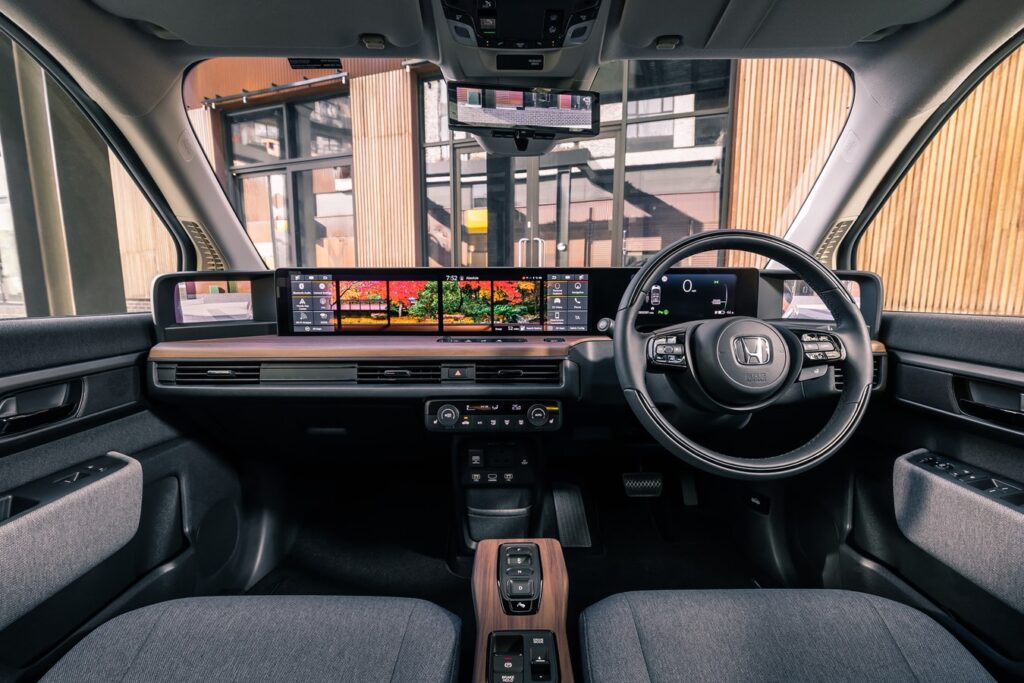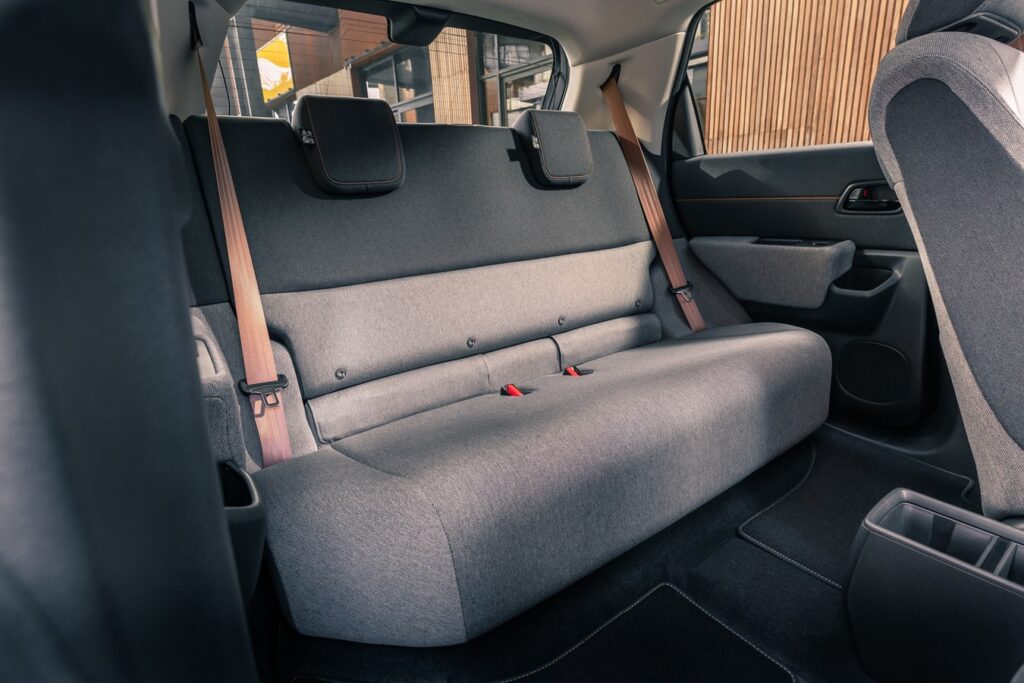With the traditional British love of small cars, the electric supermini has the potential of being one of the largest conversion sectors to battery power for the British driving population.
And, while there are electric versions of traditional choices like the Mini Electric, Peugeot 208 and Vauxhall Corsa, there are now game-changers such as this Honda e. Honda’s hybrid history with the Civic and Insight, but this Honda e has the potential to bring a ‘cool kid’ influence to the class that hasn’t been much until now. But is there enough substance beneath that style?
HONDA E – DESIGN
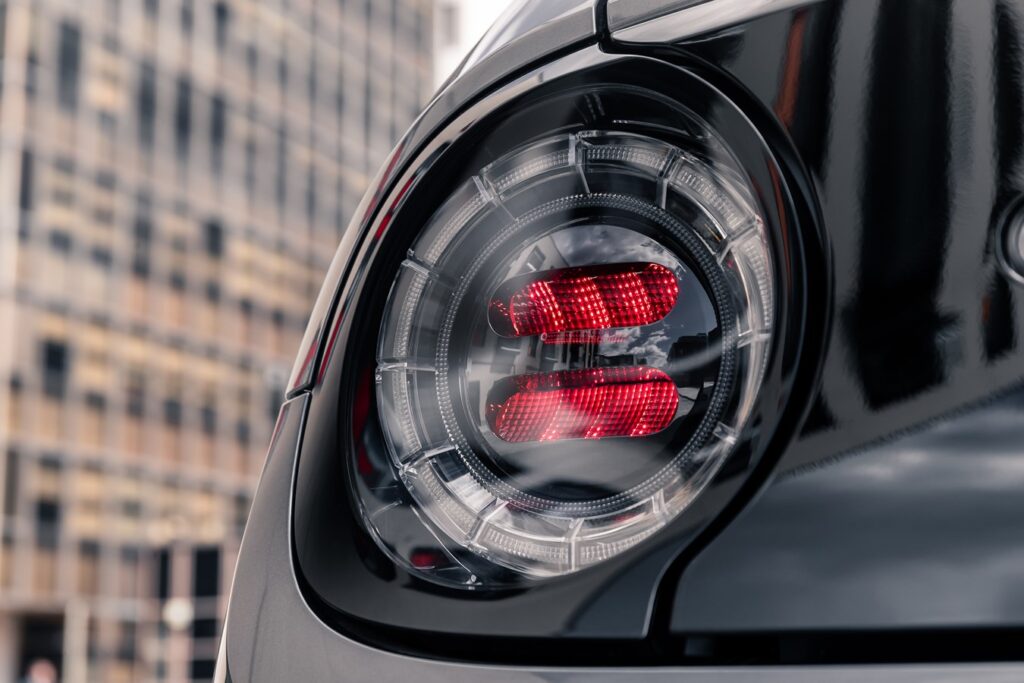
The Honda e’s stunning looks pick up on styling cues with the original 1970s Civic, but there’s also hints of the Peugeot 205 in the curved C pillar between the rear door and the tailgate.
We especially love the squat looks and details like the circular lights, pop-out door handles and charging port on the bonnet. With that premium price tag, it needs to stand out of course, but there’s no question that this is a handsome looking car that boasts supercar levels of head-turning ability.
HONDA E – POWER AND RANGE
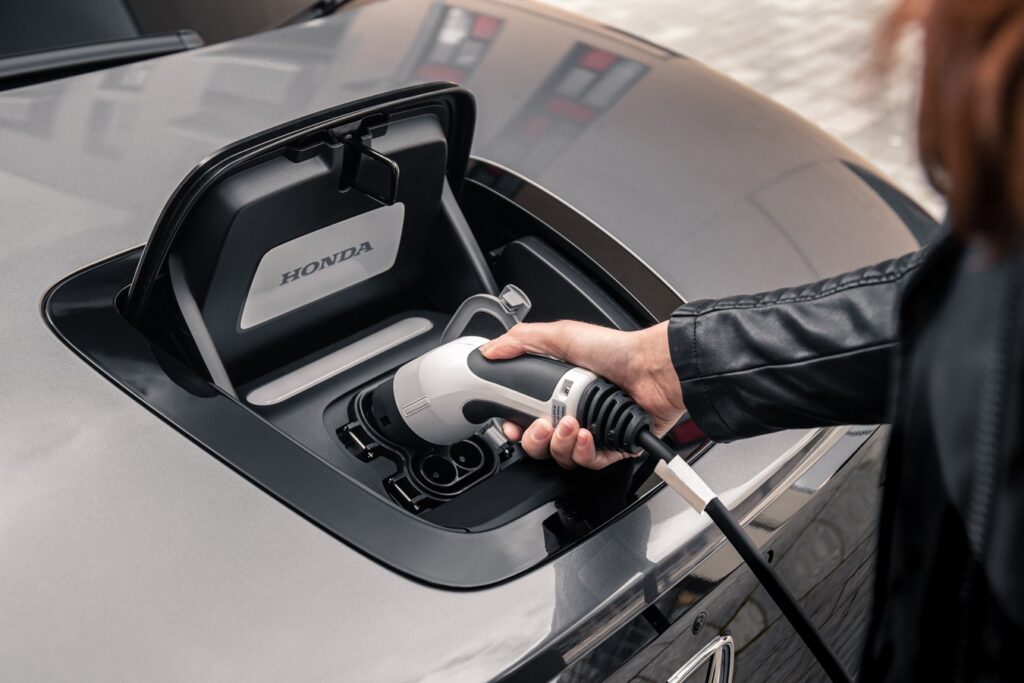
Beneath those looks is a 35.5kWh battery driving the rear wheels. In the standard Honda e that means the equivalent of 136bhp with a range of 137 miles, while the Advance tested here boasts 154bhp with improved performance but a depleted range of 125 miles. Honda expects the bullk of sales though to be the Advance version.
Honda claims that the e’s range and battery combination has been positioned on purpose, pointing out that EVs make most sense in urban environments and the average UK commute is 23 miles. But when many buyers are just getting used to accepting improved ranges on EVs, it feels like a backwards step. By comparison the latest Renault Zoe, admittedly a very different car, claims a range of 245 miles, almost double that of the Honda.
The Honda e can be charged using either a CCS rapid charger or a Type 2 connection. The former can provide up to 80 per cent of range in just 30 minutes using a 50kW charging point, while a 7.4kW supply can fully charge the car in 4.1 hours. The car comes with two cables as standard including for a three-point household socket. A full charge on a household socket takes just under 19 hours.
HONDA E – ON THE ROAD
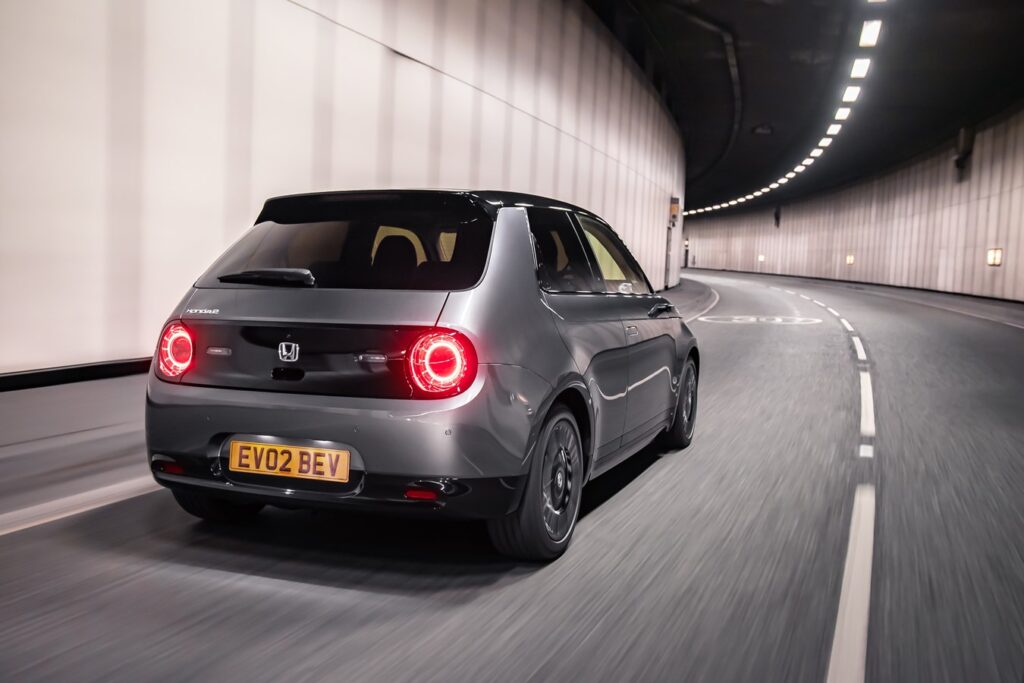
It’s no surprise with rivals like the Mini Electric and Peugeot’s e208 that Honda is keen to emphasise the e’s dynamic on-road credentials. Certainly its squat stance lends itself to keen drivers even if that limited range might suggest otherwise.
The good news though is that it certainly delivers on those looks. There are two main driving modes, Normal and Sport, alongside what Honda calls its Single Pedal Control System. In essence this means a heightened level of regenerative braking to allow you to drive the car almost only using the throttle pedal.
Added to that is that there are adaptable regenerative settings with the system on and off too – three different settings when the Single Pedal system is switched on and four with it off – although as when the system is in use there is no creep function like a normal automatic.
Does it work? Yes and no. Like many rivals, with the system switched on it can feel aggressively abrupt at times and, again like others, might take some familiarity to get the best from it. By comparison, with the system switched off and with the regenerative settings set to maximum, that ironically doesn’t feel like enough.
More time behind the wheel would undoubtedly allow you to adapt your driving style, but it feels like there’s a gap between the two systems where we couldn’t find an entirely satisfactory middle ground.
That’s a shame as the rest of the Honda e’s on road driving manners are excellent. The ride quality could be better on broken surfaces, but there’s little body roll through corners and there’s no doubt that it loves to be driven with verve. The steering is sharp and direct and mid-range acceleration and its sensitivity to throttle inputs, especially when in Sport mode, is superb.
HONDA E – INTERIOR
Like the Honda e’s exterior styling, the interior is nothing short of stunning. There are five wide, shallow screens dominating the full width of the dashboard – the outer two acting as the door mirrors for the side cameras fitted as standard. There has clearly been a lot of attention paid to the high quality, suit-like seat fabric and matt finish wood.
The main rear view mirror is also a digital screen, but while the two side screens soon become second nature, we sometimes found it hard for our eyes to quickly focus on the central rear view mirror when in camera mode (fitted as standard to the Advance). Thankfully, a quick flick can revert it to a traditional mirror.
The flip side of those looks though is the Honda e’s flawed practicality. Rear seat space is cosy for adults and the 171-litre boot is even smaller than the Mini. Just a single airline carry-on wheely bag would fill it.
HONDA E – SUMMARY
We love the Honda e, but it’s impossible to ignore its limited range and lack of practicality in a small EV hatchback market that’s becoming increasingly competitive and will only become more so.
The Honda e Advance, the only version initially available, costs £29,160 after the UK government plug-in car grant. The standard car will cost £26,660 but has slightly reduced equipment levels so misses out on the likes of the central rear view mirror camera, heated steering wheel and premium audio system.
Even when both models are available, Honda expects the majority of Honda e sales to be the Advance and leasing costs for that start from £312 per month. While there’s no questioning its desirability though, we do wonder if its lack of real world range may restrict it to being nothing other than a niche choice.

Fact box
Model: Honda e
Price: from £26,660
Power: Electric – 35.5kW
Range: 137 miles (125 for Advance)
Ave consumption: 3.3mls/kWh
Average charge time on a domestic wallbox: 4.1hrs
CO2 emissions: 0g/km
Rating: 8/10


